Brandon Leuallen, The Business Times
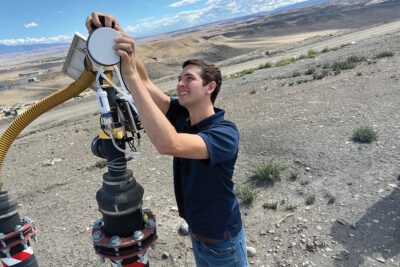
The Mesa County Landfill has become the first site in Colorado to test a new technology that automatically monitors and adjusts landfill methane gas wellheads.
Developed by Grand Valley Instrumentation of Grand Junction, the Meerkat Monitoring System takes hourly samples, balances wellfield pressure in real time and promises to boost gas capture while reducing emissions.
The system is about to undergo a certification study with the Colorado Department of Public Health and Environment in order to eventually be deployed across the state.
The technology is the brainchild of Grand Valley Instrumentation, a company run by three partners: Marc Fiot, Rikki Cook and Christian Fiot.
Cook oversees administration and sales, drawing on her background in business administration and fine arts from Colorado Mesa University.
Marc Fiot serves as research and development manager, bringing expertise as a software engineer, IoT developer and mechanical designer.
Christian Fiot, who has been developing gas-detection instrumentation since the 1980s, contributes decades of engineering experience, according to the company’s website.
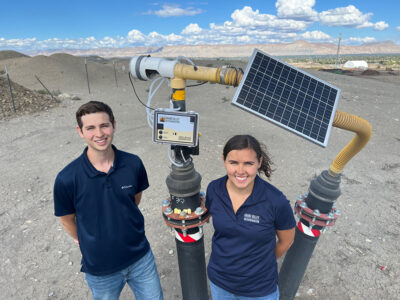
From Manual Checks to Automated Adjustments
According to Cook, the Mesa County Landfill wellheads have historically been manually monitored once a month by County Regulatory Compliance Manager Dylan Brown, who measures gas composition and adjusts pressure. That left long stretches of time where wells could operate suboptimally, allowing methane and other gases to escape as well as costing extra time during checkups.
The Meerkat system changes that. Each unit is mounted directly on a wellhead and takes hourly samples of methane, carbon dioxide, oxygen, temperature, pressure and flow, using a built-in actuator. According to Marc Fiot, it also adjusts vacuum pressure in real time, keeping the wellfield balanced despite fluctuations in barometric pressure, moisture or temperature
The system communicates wirelessly, as Fiot said, “The units communicate with LTE by having their own Verizon card.” He said the models also can be supported with a wifi mesh network for sites with poor connectivity.
“Instead of a snapshot once a month, we’re providing hundreds of times more data,” Cook said. “That lets operators respond to problems before they get out of control.”
Local innovation, broader impacts
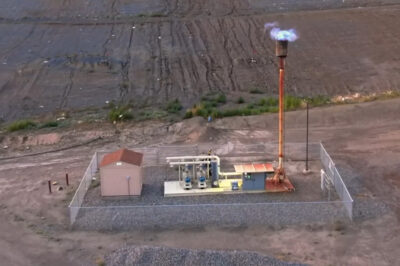
Grand Valley Instrumentation began developing the Meerkat about a year-and-a-half ago after touring the landfill with Brown, who highlighted challenges monitoring the wells, including the looming regulatory changes that may require more frequent monitoring.
The Mesa County Landfill, the largest in Western Colorado and the ninth largest open municipal landfill in the state, first installed a voluntary flare system in 2012 to burn off methane, according to a Grand Junction Daily Sentinel article “Garbage and Greenhouse Gas: Landfills brace for new limits on methane emissions,” published September 2023.
That flare operated until 2021, when the county shut it down due to costly maintenance and low methane volumes. The county in 2023 installed a new flare, sized for its actual methane output, which has been running successfully since.
Marc Fiot said some of the landfill’s wells reach depths of about 60 feet, while others extend down to around 150 feet.
Operators can log in to see live wellfield status, review historical trends, export compliance data and receive alerts if oxygen intrudes or methane levels drop.
In the field, the devices are designed for quick installation and yearly swap-outs for recalibration. Once installed, swapping out a unit “takes less than two minutes” using two straps, Marc Fiot said.
Safety and other benefits
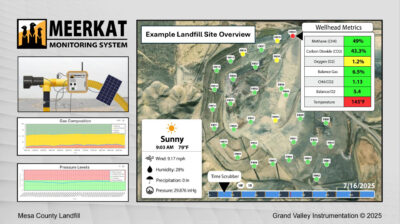
According to the Environmental Protection Agency, landfills account for about 14 percent of methane emissions in the United States.
In a Grand Junction Chamber of Commerce 2025 Energy Summit Presentation, Cook showed that by dynamically adjusting pressure, the Meerkat aims to increase gas capture by as much as 20 percent.
The presentation also showed that at Mesa County Landfill, even a conservative 10 percent improvement could mean an additional $56,000 in biogas sales and $42,000 in carbon credits each year.
Cook and Fiot said the system occasionally faces practical challenges. Cook described how crows at the landfill have tugged at tubing and tried to carry off shiny parts, forcing design tweaks that mitigate the potential issues. Fiot said dust and bird droppings can slightly obscure the solar panels, though the devices have held up well in the field.
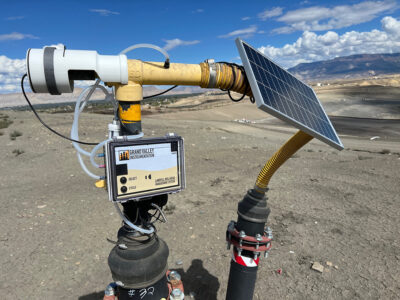
What else they do and what comes next
While the Meerkat is designed for landfill methane wells, Grand Valley Instrumentation also builds monitoring systems for other industries.
According to the company’s website, it developed a workplace safety alarm at Grand Junction’s Persigo wastewater plant that detects toxic and explosive gases. The system can also be deployed at mining operations, oil and gas sites, and manufacturing plants, and it can be configured to detect hydrogen sulfide, carbon monoxide, methane, oxygen, carbon dioxide and other gases.
These monitors integrate with supervisory control systems to automatically trigger ventilation when gases spike. The company has also developed a mass spectrometer, a turbo display controller, and it offers software for remote monitoring.
“Our specialty is custom instrumentation that can be deployed in tough environments, run on solar and communicate wirelessly,” Marc Fiot said. “We build everything here in the valley, and we tailor it to each client’s needs.”
Cook said the system is set to enter into the certification study with the Colorado Department of Public Health and Environment. Five units will be studied from mid-October through mid-January, with Colorado Mesa University providing statistical analysis of the results. If successful, the Meerkat could become an approved compliance reporting tool in Colorado and potentially nationwide.

